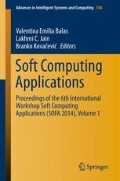Abstract
The goal of this article is to respond to a research question: what are the appropriate steps and challenges in building a parallel collection of data required for e-health systems design and implementation for deaf people both in avatar and video technology? The paper presents the steps taken in order to create a parallel collection of dentistry data for prevention education needed in development of medical education system for deaf people. The specific feature of this type of applications is that the medical information and concepts are converted in sign language for deaf users through an avatar. Two types of avatars are taken into consideration: the animated avatar will display an animated figure, and the video avatar will display recorded humans in order to make a comparative analysis between video technology and animated technology used in e-health applications for deaf people using avatars. The study starts with the project phase and continues with implementation followed by results analysis. The two collections of data are stored in different formats. In the case of the avatar video format, the collection is stored as files in video format. In the case of the animated avatar, the collection of files contains expressions and phrases in SiGML animated format. The content must be prepared in advance in both forms before assembling the applications. An important part of this paper covers detailed description of the process of editing signs for both forms of the avatars. The application software and the format of the files are presented in extenso. The final part consists of results of the comparative analysis and foreshadows the next steps to be made for future research.
Access this chapter
Tax calculation will be finalised at checkout
Purchases are for personal use only
References
Tessa. ViSiCAST. http://www.visicast.co.uk/news/Tessa.html
Visicast Home Page. www.visicast.co.uk
Morrissey S (2008) Data-driven machine translation for sign languages. Dublin City University, Dublin, Ireland. PhD Thesis
Wolfe R, Cook P, McDonald JC, Schnepp J (2011) Linguistics as structure in computer animation: toward a more effective synthesis of brow motion in American sign language. In: Herrmann A, Steinbach M (eds) Nonmanuals in sign language special issue of sign language & linguistics, pp 179–199. http://asl.cs.depaul.edu/papers/WolfeCookMcDonaldSchnepp.pdf
Linguistic and Assistive Technologies Laboratory (LATLab). http://latlab.cs.qc.cuny.edu/index.html
Linguistic and Assistive Technologies Laboratory (LATLab) -Research. http://latlab.cs.qc.cuny.edu/research.html
Huenerfauth, MP (2003) American sign language natural language generation and machine translation systems. Technical Report, computer and information sciences, University of Pennsylvania. MS-CIS-03-32. http://eniac.cs.qc.edu/matt/pubs/huenerfauth-2003-ms-cis-03-32-asl-nlg-mt-survey.pdf
van Zijl L, Olivrin G (2008) South African sign language assistive translation. In: Eighth international ACM SIGACCESS conference on computers and accessibility. ASSETS 2006, pp 233–234
ASL System User Guide. http://idealab.tech.purdue.edu/ASL/tutorial/asl_tutorial.htm
jason1.wmv. http://www.youtube.com/watch?v=9mP2sySx3zM
Nicoletta Adamo-Villani-Research Projects. http://www2.tech.purdue.edu/cgt/facstaff/nadamovillani/funded_projects.htm
ESIGN Project Website. (Essential sign language information on government networks), http://www.sign-lang.uni-hamburg.de/esign/
esign_summary02.ppt. www.sign-lang.uni-hamburg.de/esign/esign_summary02.ppt
SigntelProject. The University of East Anglia. (Citat: 04 04 2012). www.uea.ac.uk/cmp/research/graphicsvisionspeech/vh/signtel+project
Dicta-Sign—ProjectPresentation. www.dictasign.eu/ and http://www.dictasign.eu/attach/Main/HomePage/project_presentation.pdf
Sign Speak Project website. www.signspeak.eu/
Prinetto P, Tiotto G, Principe AD Designing health care applications for the deaf. http://eudl.eu/pdf/10.4108/ICST.PERVASIVEHEALTH2009.6072
Rubén San-Segundo Hernández Translated by Robert Smith—Extract from improvement and expansion of a system for translating text to sign language—Chapter 5. Representation of the signs downloaded from http://vhg.cmp.uea.ac.uk/tech/hamnosys/An%20intro%20to%20eSignEditor%20and%20HNS.pdf
Hanke T, Popescu H EDC-22124 ESIGN / 27960 deliverable D2.3. Virtual humans research for sign language animation. (Interactiv) (Citat: 06 04 2012). http://vhg.cmp.uea.ac.uk/tech/esigneditor/eSIGN-D23rev2.pdf
HamNoSys, Description, Website University of Hamburg downloaded from http://www.sign-lang.uni-hamburg.de/projects/hamnosys.html
Chiriac IA, Stoicu-Tivadar L, Podoleanu E (2014) Health education applications for deaf people—design models, hierarchies and levels. In: Proceedings of the 10th international scientific conference “eLearning and software for education. Bucharest, vol 2, April 24–25. http://proceedings.elseconference.com/index.php?r=site/index&year=2014&index=papers&vol=14#
Acknowledgments
I would like to express my gratitude to Professor John Glauert providing guidance and all the necessary programs to work with animated avatars without which all this research on animated avatars would not have been possible in this form. Professor John Glauert is head of the Virtual Humans Group research team, School of Computing Sciences, University of East Anglia, Norwich. Thanks are also due to Prof. Florea Barbu for his dedicated guidance and assistance in the work for the preparation of the words and phrases in Romanian sign language.
Author information
Authors and Affiliations
Corresponding author
Editor information
Editors and Affiliations
Rights and permissions
Copyright information
© 2016 Springer International Publishing Switzerland
About this paper
Cite this paper
Chiriac, I.A., Stoicu-Tivadar, L., Podoleanu, E. (2016). Romanian Sign Language Oral Health Corpus in Video and Animated Avatar Technology. In: Balas, V., C. Jain, L., Kovačević, B. (eds) Soft Computing Applications. SOFA 2014. Advances in Intelligent Systems and Computing, vol 356. Springer, Cham. https://doi.org/10.1007/978-3-319-18296-4_24
Download citation
DOI: https://doi.org/10.1007/978-3-319-18296-4_24
Published:
Publisher Name: Springer, Cham
Print ISBN: 978-3-319-18295-7
Online ISBN: 978-3-319-18296-4
eBook Packages: EngineeringEngineering (R0)

